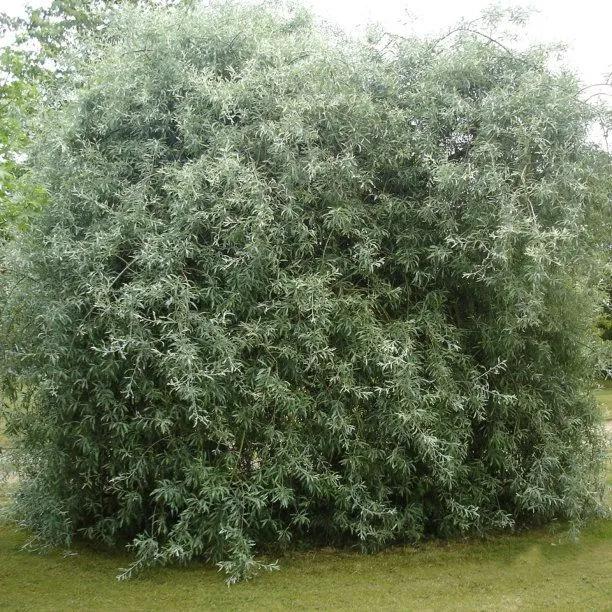Weeping Ornamental Pear, Large Trees
Honest Delivery Prices- Small, round, weeping tree.
- Ideal for lawn planting.
- Sizes: Standards only.
- Max. Height: 3-6m
- RHS Award of Garden Merit
- Bareroot Delivery: Nov-Mar.
Description
Pyrus salicifolia Pendula - Weeping Pear Trees - Large Standards - Delivered by Mail Order from the Nursery with a 1 Year Guarantee
Pyrus salicifolia Pendula, is a an ornamental Weeping Pear tree. It is suitable for a small garden and will grow on any soil.
Pendula can reach a height of about 6 metres at most, but can easily by kept at 3-4 metres with a little pruning.
You can buy eating pear trees here, as well as wild pears and ornamental Chanticleer pears.
How Standard Trees are Measured:
All the plants in the ornamental trees section are graded as standards, which means that they are measured by their girth in centimetres 1 metre above ground level (basically, their trunk's waist measurement). They aren't measured by their height, which will vary. So, a 6/8 standard has a trunk with a circumference of 6-8 centimetres and an 8/10 standard has a trunk 8-10 centimetres around. This measurement makes no difference to the tree's final height.
Standard trees are 2 - 3.5 metres tall (on average) when they arrive; they are the most mature trees that you can buy from us. We cannot tell you precisely how tall your trees will be before we deliver them.
General description of Pyrus salicifolia Pendula:
This little tree has a delicate appearance, but it is one of the toughest ornamental plants we sell. It a small, weeping tree with slim, silvery leaves that darken as summer wears on to a shiny grey-green. It carries masses of small white flowers in spring and early summer, which are followed by small brown fruit. The fruit aren't really edible, as they taste too bitter, but they are totally safe and should get some interest from hungry birds in early winter.
Weeping pears naturally have a neat round canopy about 2 metres across and are ideal specimens for lawn planting or small gardens.
Did You Know?
Pyrus salicifolia, which means "willow leaf pear", is native to the Middle East, Turkey and South-Eastern Europe and was introduced to Britain in about 1780. This weeping variety won the RHS Award of Garden Merit in 2002 for being both pretty and easy to grow.
Planting Instructions
Notes on planting Pyrus salicifolia Pendula trees:
These trees will look their best when they have at least half a day of sun, but apart from that, they will grow almost anywhere - dry, poor soil, damp clay, chalk, frost pockets, exposed windy locations: this tree will take it all in its stride. It won't quite grow right on the coast, but all it needs is a bit of shelter from salty winds and it will be fine. It is also called the Sand Pear, which indicates how well it does in very thin, dry soils, although it won't actually grow in pure sand.
Prepare your site before planting:
It is good to dig over the site where you plant a tree several months in advance. Kill the weeds first: for tough weeds like nettles, brambles and ground elder, you will usually need a weed-killer to get rid of them. When you dig the soil over, remove stones and other rubbish and mix in well rotted compost or manure down to the depth of about 2 spades.
Watch our video on how to plant a tree for full instructions.
Remember to water establishing trees during dry weather for at least a year after planting.
Tree Planting accessories:
Prepare your site for planting by killing the weeds and grass.
You can buy a tree planting pack with a wooden stake & rubber tie to support the tree and a mulch mat with pegs to protect the soil around the base of your tree from weeds and drying out.
We suggest that you use mycorrhizal "friendly fungi" on the roots of all newly planted large trees: if your soil quality is poor, we strongly recommend it.
You can also improve your soil with bonemeal organic fertiliser.


